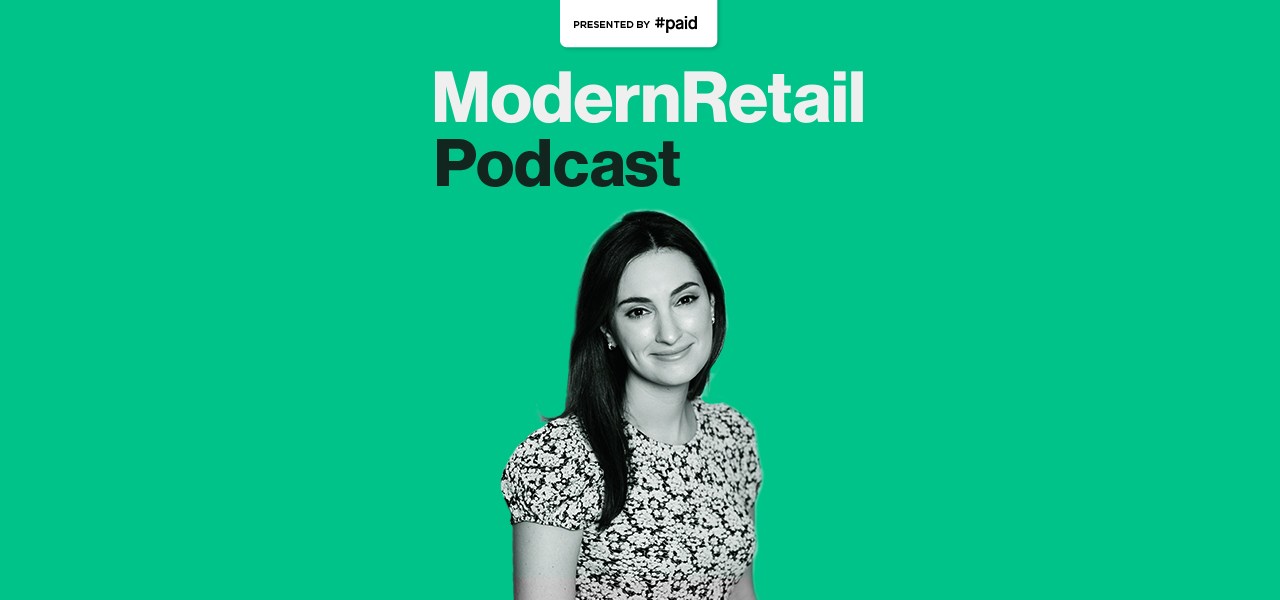Studs CEO Anna Harman: DTC-only businesses pivot back into retail as a growth mechanism

Subscribe: Apple Podcasts | Stitcher | Google Play | Spotify | RSS
Studs co-founder and CEO Anna Harman recently got a second piercing in her ears. One place she looked at would have charged her $500. The other, which she went for, was a tattoo parlor.
“And while the piercing experience was great — they pierce with a needle, it was healthy and safe — the overall environment was really not suited to me. I felt really personally out of place there,” Harman said on the Modern Retail Podcast.
She reached out to Lisa Bubbers, who would go on to co-found Studs — a store that pierces your ears and sells you jewelry as well — with her last year. “I said to Lisa ‘wow, it feels like there’s a real opportunity here to reinvent this experience end-to-end,'” Harman recalled. “We really thought the opportunity was to combine healthy and safe needle piercing with really accessibly-priced, fun jewelry in an environment that the customer was excited to spend time in.”
Studs has a flagship store in Soho and is taking advantage of trends in the world of brick-and-mortar. “How do you physically expand in a way that’s not incredibly capital intensive?” Harman said. “You will likely see Studs do things like shop-in-shops and kiosks.”
Harman joined the Modern Retail Podcast to discuss the dreaded piercing gun, and what she’s learning from both the direct-to-consumer zeitgeist and her time at a hedge fund.
Here are a few highlights from the conversation that have been lightly edited for clarity.
Choosing the brick-and-mortar battles wisely
“I think a lot of DTC-only businesses pivot back into retail as a growth mechanism. I also think there are certain types of businesses where retail always made sense because that was the way the customer wanted to experience the brand. For us, we’re a physical business first because we have a physical service that can’t ever be digitally provided. In terms of scale for Studs, we think less of getting to X or Y locations in order to be ‘at scale.’ We think of it much more as ‘how do we experiment with different types of formats to reach the customer in really interesting, different ways. That can mean what we call our flagship 12 Prince Street store — which still isn’t that big — orbited by different types of formats of smaller locations that actually may make more sense. You will likely see Studs do things like shop-in-shops and kiosks. We’re much more interested in how you take advantage of the real estate trends. The direct-to-consumer brands of 10 years ago were really able to take advantage of the advertising landscape. For us it’s much more about: how do you physically expand in a way that’s not incredibly capital intensive?”
When everyone has a hero product, loyalty is over
“I used to work at a hedge fund called Bridgewater. And Bridgewater’s thesis was how economies were cyclical by their nature, at some level. You could see patterns and trends and how things had evolved through time. And part of me wonders if the same thing is true for consumer brands, where you’re going to see periods of mass consolidation and then mass fragmentation. We are in deep fragmentation and tail land now, and you’ll see consolidation again. There will constantly be ebbs and flows of that. The thing that I find very interesting is that the customer at some level right now has so many options. The tail is so long that I think there’s both tremendous experimentation, like a willingness to try almost any product once, from the consumer’s perspective. And then simultaneously the churn is wild. You’ll experiment with any version of any company’s hero products, and then you’re like, ‘oh, and then there’s the next one and the next one and the next one.’ And I don’t think the customer has any appetite for loyalty, if that makes sense, anymore.”
Studs’ customer base
“We’re attracting a really broad customer base. But in terms of the core audience we’re after, it’s an 18 to 30-year-old, and the marketing and campaign imagery reflects that. We’re getting a really healthy split between Gen Z and millennial, which we like. And then there’s lots of opportunity to expand in the segments that are already coming to us. I think there’s opportunities to expand in the mom segment, there’s opportunities to expand in the ‘a bit older’ segment. Part of the reason we’re attracting such a broad audience is not only that lots of people have ears, but that gender norms are changing, workplace norms are changing. When I was 25 and I went to go work at my law firm and I had to remove my cartilage ring because I felt it was inappropriate? That whole ethos has evolved.”

